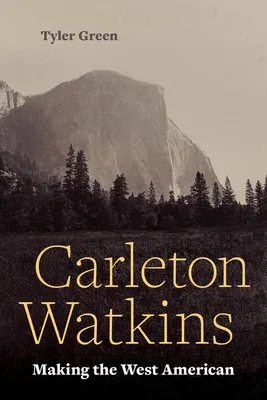"[A] fascinating and indispensable book."--Christopher Knight,
Los Angeles Times
Best Books of 2018--The Guardian
Gold Medal for Contribution to Publishing, 2019 California Book
Awards
Carleton Watkins (1829-1916) is widely considered the greatest American
photographer of the nineteenth century and arguably the most influential
artist of his era. He is best known for his pictures of Yosemite Valley
and the nearby Mariposa Grove of giant sequoias.
Watkins made his first trip to Yosemite Valley and Mariposa Grove in
1861 just as the Civil War was beginning. His photographs of Yosemite
were exhibited in New York for the first time in 1862, as news of the
Union's disastrous defeat at Fredericksburg was landing in newspapers
and while the Matthew Brady Studio's horrific photographs of Antietam
were on view. Watkins's work tied the West to Northern cultural
traditions and played a key role in pledging the once-wavering West to
Union.
Motivated by Watkins's pictures, Congress would pass legislation, signed
by Abraham Lincoln, that preserved Yosemite as the prototypical
"national park," the first such act of landscape preservation in the
world. Carleton Watkins: Making the West American includes the first
history of the birth of the national park concept since pioneering
environmental historian Hans Huth's landmark 1948 "Yosemite: The Story
of an Idea."
Watkins's photographs helped shape America's idea of the West, and
helped make the West a full participant in the nation. His pictures of
California, Oregon, and Nevada, as well as modern-day Washington, Utah,
and Arizona, not only introduced entire landscapes to America but were
important to the development of American business, finance, agriculture,
government policy, and science. Watkins's clients, customers, and
friends were a veritable "who's who" of America's Gilded Age, and his
connections with notable figures such as Collis P. Huntington, John and
Jessie Benton Frémont, Eadweard Muybridge, Frederick Billings, John
Muir, Albert Bierstadt, and Asa Gray reveal how the Gilded Age helped
make today's America.
Drawing on recent scholarship and fresh archival discoveries, Tyler
Green reveals how an artist didn't just reflect his time, but acted as
an agent of influence. This telling of Watkins's story will fascinate
anyone interested in American history; the West; and how art and artists
impacted the development of American ideas, industry, landscape,
conservation, and politics.

